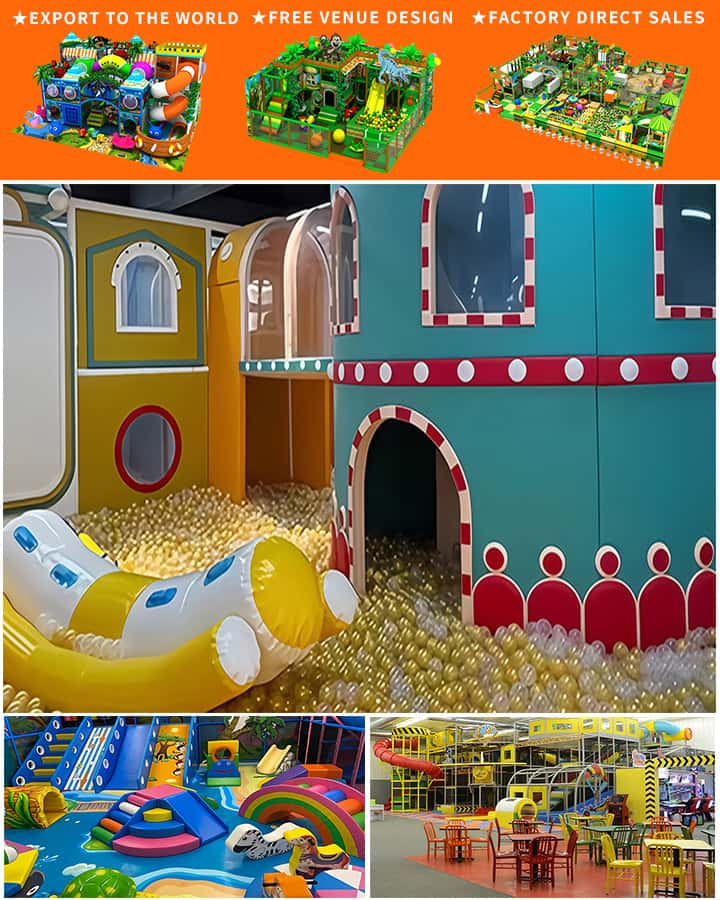In today’s fast-paced world, finding ways to keep kids entertained and engaged indoors can be a challenge. Fortunately, there are numerous options for indoor kids’ play equipment that not only keep children occupied but also support their physical, mental, and emotional development. This guide will explore the best types of indoor play equipment for children, highlighting their benefits and offering tips on how to choose the right ones for your little ones.
Benefits of Indoor Kids’ Play Equipment
Physical Development: Indoor gyms, climbing structures, and balance beams help improve children’s motor skills, coordination, and strength. Activities like jumping, sliding, and crawling enhance their gross motor skills while more intricate toys like building blocks or puzzles foster fine motor skills.
Cognitive Development: Interactive toys such as educational games, problem-solving puzzles, and creative craft kits stimulate cognitive development. These activities encourage critical thinking, spatial awareness, and creativity, laying a strong foundation for academic skills.
Social and Emotional Growth: Multi-functional play equipment that encourages cooperative play helps children develop social skills such as sharing, teamwork, and empathy. Pretend-play sets like kitchens or doctor kits allow kids to act out various scenarios, aiding emotional intelligence and role understanding.
Types of Indoor Kids’ Play Equipment

Climbing Walls and Play Structures: These structures are excellent for developing physical strength and confidence. Look for age-appropriate designs with safety features such as padded surfaces and sturdy construction.
Interactive Toys and Games: From electronic learning boards to interactive books, these tools combine fun with education, making them perfect for stimulating young minds. Choose devices that offer a variety of activities to keep kids engaged over time.
STEM Kits: Science, technology, engineering, and mathematics (STEM) kits provide hands-on learning experiences that nurture curiosity and problem-solving abilities. Options range from simple building block sets to more complex robotics kits.
Art and Craft Supplies: Art supplies like crayons, markers, playdough, and beads not only keep kids entertained but also promote creativity and fine motor skills. Consider organizing a designated art station where children can freely express their creativity.
Pretend-Play Sets: Kitchens, toolkits, and dollhouses allow children to immerse themselves in imaginative play, which is crucial for social development. Ensure these sets come with durable, non-toxic materials suitable for prolonged use.
Tips for Choosing the Right Play Equipment
Age Appropriateness: Always check the recommended age range on the packaging to ensure the equipment is suitable for your child’s developmental stage.
Safety First: Look for certifications and safety standards. Avoid equipment with small parts that could pose choking hazards, and always supervise young children during playtime.
Durability and Quality: Invest in well-made equipment that can withstand wear and tear. It’s better to pay a bit more upfront than to replace flimsy items frequently.
Space Availability: Consider the amount of space you have at home. Foldable or multi-purpose equipment can be a lifesaver in smaller living areas.
Educational Value: Prioritize toys and equipment that offer educational benefits along with entertainment. Check reviews or recommendations for products that have been positively received by other parents.
Conclusion
Choosing the right indoor kids’ play equipment can transform your home into a vibrant hub of activity and learning. By focusing on developmental benefits, safety, and quality, you can create an engaging environment that supports your child’s growth in every way. Whether it’s through physical play, cognitive challenges, or imaginative adventures, the right indoor play equipment will keep your kids happily occupied while they learn and thrive.




